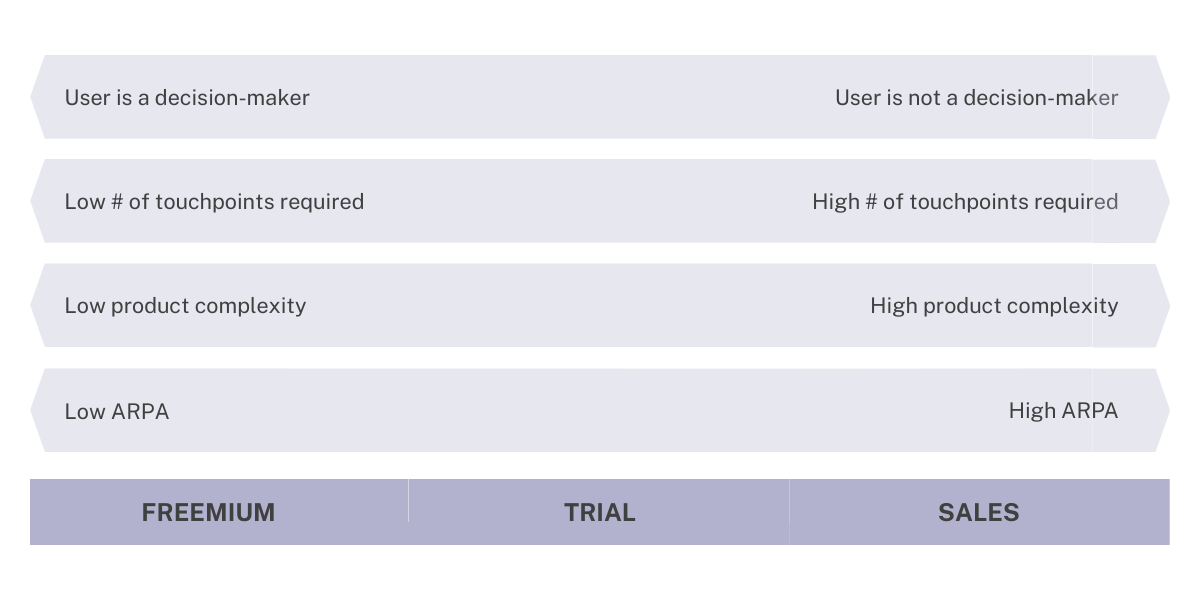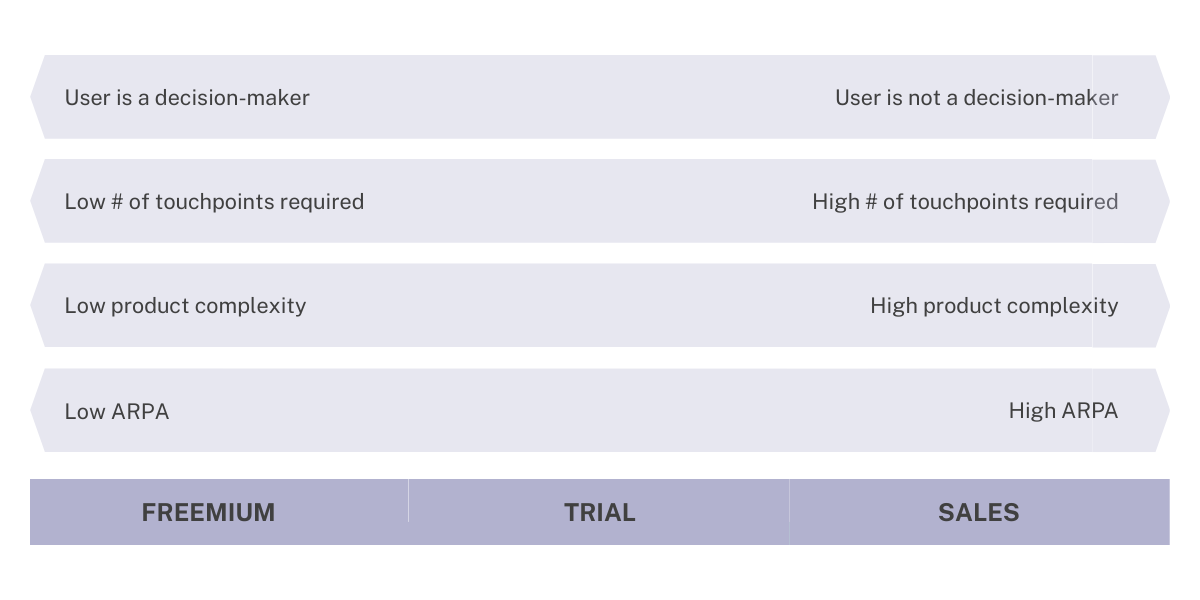
When to build a freemium plan and how to get it right
The journey new users go through when using your product directly affects how the product is evaluated and how it is perceived. The business model you choose strongly influences the entire funnel, enabling or preventing you from engaging certain types of users.
This article will examine whether the freemium model is right for your business and how it compares to two other models: free trial and sales driven.
The three key models: freemium, free trial and sales-led
Conventional wisdom says that you should choose one model and stick with it. The following diagram shows a choice between the three typical models: Freemium, free trial and sales-led.

Image Credits: Konstantin Valiotti
Freemium models allow you to target a wide audience and retain them in your product even if users do not have a budget for the solution. The core idea is to create value for the end user and turn the resulting credibility into revenue by selling them something more advanced.
The free-trial model creates a time limit and positions the product in a way that shows off its full value, but requires a decision at the end of the trial period. Users can no longer extract value from the product on a particular day and will have to judge whether the perceived value outweighs the purchase cost.
The sales-led model routes all new inquiries to a sales representative. The first impression of the product and the anchors related to pricing are set in a conversation. The sales-led model introduces friction at the top of the funnel by prompting users to have a conversation, but it aims to significantly simplify the path to conversion whereas a full self-service experience would have too much friction.
Given the obvious differences between these models, choosing one should be fairly straightforward. For example, you should choose the sales-oriented model if you work in a market with big deal sizes and complex products.
However, current market conditions do not support having just a single model. Asana offers a free plan, a trial of the paid plan and a “Contact Sales” motion. At HubSpot, you can use the free products or talk to sales about advanced product packages. Calendly has a free plan, a trial, and a “Contact Sales” motion. The list goes on.
A freemium model allows you to grow by differentiating yourself from your competitors by offering the basic use case for free.
When to introduce a freemium plan
Introducing freemium is an investment that you should evaluate in the same way as other projects. It requires (sometimes significant) engineering investment, marketing support and organizational changes in sales, finance and operations.
There are three good reasons to introduce a freemium model:
- Retaining an acquired audience in case they can’t upgrade right away.
- Expanding product-market fit.
- Improving market share by hitting competition.
Retaining an acquired audience
When you have a free trial, your newly acquired audience will have to decide if they want to pay right after the trial expires. There will be an audience that loves your product and has the budget to pay, and they will do so unless a competing offer is more attractive to them.
However, there will always be many users who are either skeptical about the product itself or do not have the budget to pay. When faced with the dreaded paywall, they will go through all reasons to postpone the decision. The longer they hesitate, the less likely they will buy the solution.

